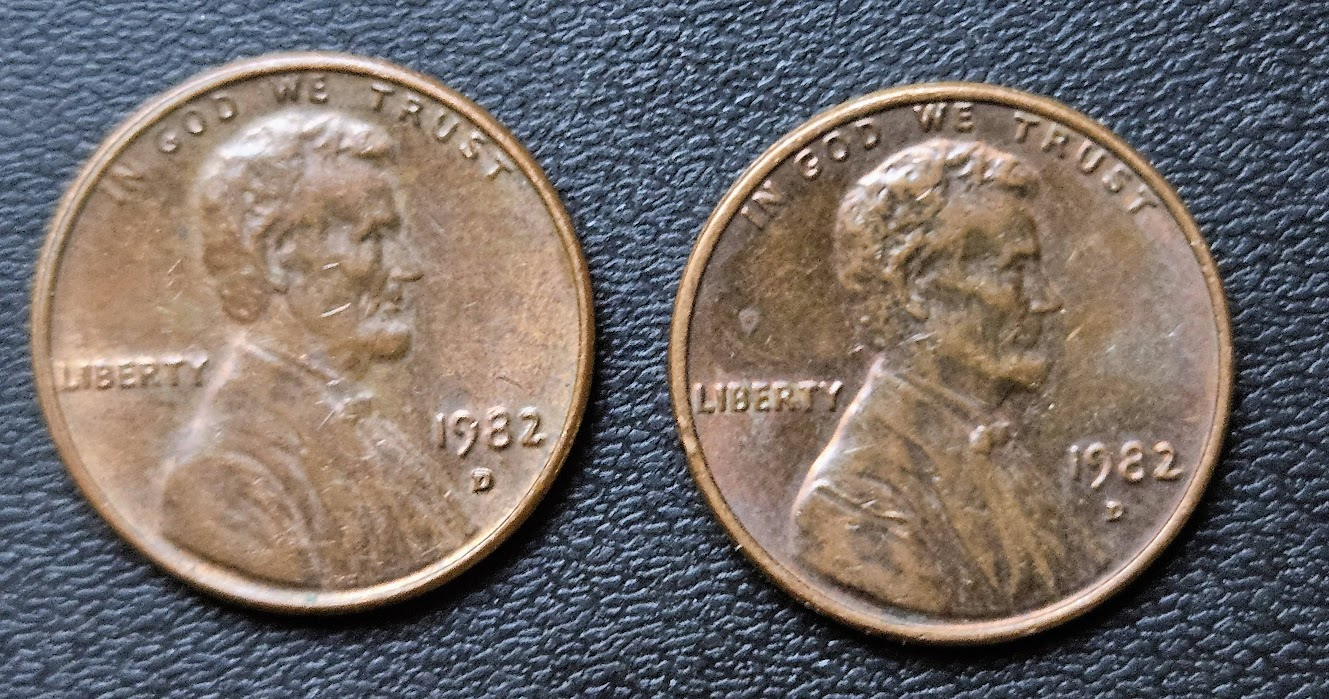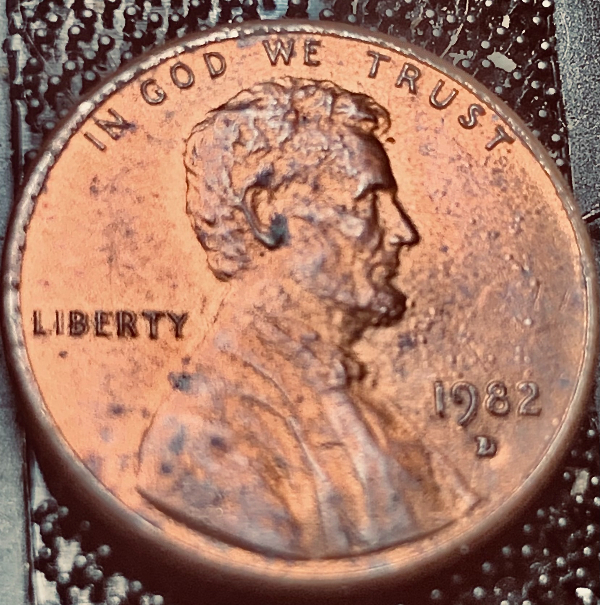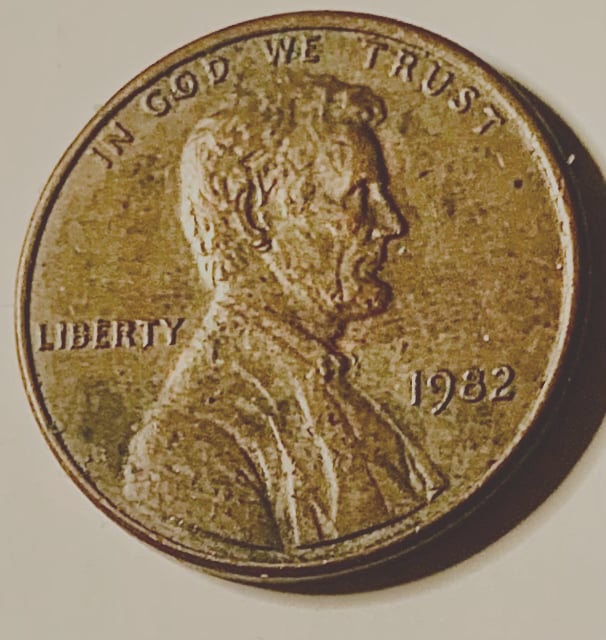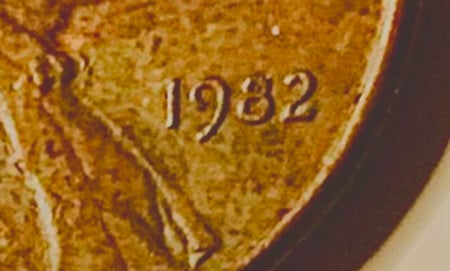1982-D large or small date copper cents
 rooksmith
Posts: 1,178 ✭✭✭✭
rooksmith
Posts: 1,178 ✭✭✭✭

Both of these weighed in at 3.1 grams, so I know they are bronze.
My question is: are either of these SMALL DATE? I noticed the 8 looks different.
For those of you who are into the cult of 1982:
Post a 1982-D Lincoln cent!
Playing around with AI, this is a short essay about the 1982D
🪙 The 1982 Lincoln Cent: A Numismatic Puzzle of Rarity and Transition
In the annals of American coinage, few years are as complex and captivating as 1982—the pivotal transition year for the Lincoln cent. Faced with rising copper prices, the U.S. Mint shifted from the traditional 95% copper composition to a more economical copper-plated zinc alloy. But this wasn’t a clean break. Instead, 1982 saw the simultaneous production of both compositions, across multiple mints, and with two distinct date styles: large and small. The result? A bewildering matrix of eight official varieties, plus one unofficial rarity that continues to stir collector excitement.
🔍 Composition and Design Chaos
The copper cents weighed 3.1 grams, while the new zinc versions came in at 2.5 grams. To complicate matters, both large and small date designs were struck in each composition, and at both the Philadelphia and Denver mints. This created a total of seven recognized varieties, with the eighth—the 1982-D small date copper cent—emerging as a legendary anomaly. Though Denver was only supposed to strike zinc cents with the small date, a few copper planchets slipped through, making this variety exceptionally rare. Only a handful have ever been authenticated, with even circulated examples fetching upwards of $15,000.
📈 Market Scarcity and Collector Demand
While most 1982 cents are common in circulated condition, the challenge lies in identifying the correct combination of date style, composition, and mint mark. High-grade examples, especially in Mint State 67 or higher, command significant premiums. For instance, a 1982 zinc small date cent in pristine red condition can exceed $1,200. The market for these transitional coins has surged in recent years, with collector interest tripling since 2015. This sustained enthusiasm reflects not just rarity, but the intellectual thrill of decoding a coin’s identity.
🧠 A Collector’s Playground
The 1982 Lincoln cent is more than a monetary artifact—it’s a miniature logic puzzle. Determining a coin’s variety requires weighing it, inspecting the date typography, and checking for mint marks. For numismatists, it’s a hands-on lesson in minting history, metallurgical economics, and design evolution. And for those lucky enough to find the elusive 1982-D small date copper cent, it’s a reminder that even the humblest coin can hold extraordinary value.
Comments
Thanks I notice that the thickness of the font and the relative hight of the 8 were different. I can see that the 2 is distinctly different as well.
quickest pick up point, for me, is the distance away from the rim on the small dates.
bob
Both coins are large dates.
Look at PCGS CoinFacts for 82 small dates and you'll immediately see the difference. Small date numerals are much finer and aesthetically pleasing.
I think both coins are large dates.
No small date for you. …. As opposed to soup.
``https://ebay.us/m/KxolR5
LOL
Large date copper. Gotta search some more old rolls.
Photo taken on the fly, sry.

ZINC, 2.5 wt. small 1982 D date.
Copper...

Why do some people go by the shape of the numbers to determine Large/ Small dates,
that is hardest way, if the numbers get dinged or distorted the shape changes. Just go by
the distance of the 2 from the rim. If it is close, then it is a Large Date. If you can fit another
number between the 2 and the rim, it is a Small Date.